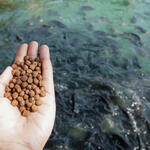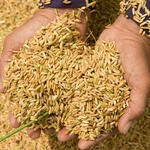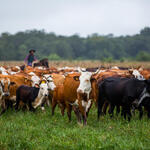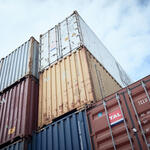- Date: 10 June 2022
- Author: Julia Kurnik, World Wildlife Fund
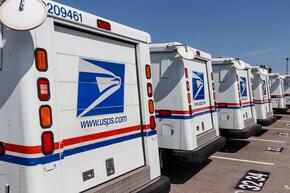
Our current food system is failing farmers, consumers, and the environment. Many farmers, especially small and minority farmers, struggle to turn a profit due to long supply chains. Meanwhile, over 30 million Americans experience food insecurity and often lack access to fresh, affordable produce. Yet fruit and vegetable farms exist in the majority of US counties, and up to 50% of all produce is wasted. There has to be a better way to get food from farmers to families.
Farmers Post is a program proposed by WWF’s Markets Institute as a way to connect farmers directly with consumers and increase food access, convenience, and nutrition. Through a partnership with the United States Postal Service (USPS), Farmers Post would allow customers to order produce from local farms and get it shipped right to their doorsteps. These are the top five reasons why Farmers Post would contribute to a more sustainable and equitable food system.
- Date: 05 May 2022
In our Behind the Scenes series we speak to WWF staff to learn more about their work and what makes them tick. For today’s post, we caught up with Katherine Devine, Director of Business Case Development for WWF's Markets Institute.
- Date: 03 May 2022
- Author: Katherine Devine, Director of Business Case Development, WWF
Animal nutrition is one of the leading contributors to greenhouse gas (GHG) emissions in the food sector, mainly due to deforestation and land conversion, whereby habitats are turned into farmland or rangeland. Nutreco, a leading manufacturer of both aquaculture and livestock feed, is taking innovative action to reduce its environmental impact by 2025. Its RoadMap 2025 outlines the company’s ambitious set of goals that address health and welfare, climate and circularity, and good citizenship.
WWF recently developed a business brief to examine Nutreco's plan and see what lessons could be applicable to the entire feed industry. The goal-setting process for RoadMap 2025 involved engaging stakeholders, including the staff who carry out essential business functions and external partners like suppliers and customers. These stakeholders provided input that fed into the RoadMap’s three pillars, each of which contains key priorities and an action plan for accomplishing them.
- Date: 25 April 2022
- Author: Julia Kurnik, Director of Innovation Startups, WWF Markets Institute
Asian carp are decimating native fish populations throughout the Mississippi River Basin and the Great Lakes in the US – and my dog, Peaches, couldn’t be happier about it.

Peaches when she's not saving the world from invasive species.
Three species of carp were inadvertently introduced to the Mississippi River in the 1970s. With no natural predator, they have proliferated, eating plankton and mussels as well as fish eggs while outcompeting other species for food and space. They even lower the water quality, further damaging the ecosystem.
Carp are also expensive: North America has spent more than $26B annually fighting a number of invasive species since 2010 with little success to show for it. The carp not only cost money, but they also reduce income in the region’s economy. Sport fishing generates billions in annual revenue along the Mississippi River and Great Lakes – an economic generator now threatened by carp, especially since Silver Carp leap out of the river and endanger boaters.
But this is where Peaches gets excited. WWF’s Markets Institute aims to identify innovative, market-based solutions to address major environmental issues across food and agriculture. While people in the US have little interest in eating Carp, a bony fish, there could be a robust pet food market for this invasive species. Demand from pet food companies would incentivize harvesting, reducing the population to manageable levels and avoiding the worst environmental damage while generating employment and reducing pressure on wild caught fish.
- Date: 13 April 2022
- Author: Julia Kurnik and Katherine Devine, World Wildlife Fund
Most agricultural methane emissions (around 70%) come from ruminants, such as cows and sheep. This is primarily due to manure and gastroenteric releases—or, simply put, cow burps. Most methane for cattle, particularly beef, is released in the grazing phase of the supply chain. When cattle roam for grazing, it is difficult to track methane release or to mitigate emissions due to the nature of grazing. Furthermore, scalability and traceability are challenging, particularly for small-scale grazing operations.
- Date: 12 April 2022
- Author: By Julia Kurnik and Katherine Devine, World Wildlife Fund
Rice, one of the most abundant crops grown and consumed globally, makes up 12% of global methane emissions – and a staggering 1.5% of total greenhouse gas emissions. When rice is harvested, a ton of rice stubble and straw is left behind for every ton of harvested rice – 750 million tons globally in 2015. Currently, to clear fields for future crops, farmers either burn the rice straw, which results in significant carbon dioxide emissions as well as methane, carbon monoxide, nitrogen oxides, sulfur oxides, and particulate matters, or they flood the field to encourage swift decay – which also leads to extensive methane emissions.
- Date: 11 April 2022
- Author: Julia Kurnik and Katherine Devine, World Wildlife Fund
Global leaders in Glasgow recently signed the Global Methane Pledge and recognized that addressing methane emissions is imperative if we’re going to achieve a 1.5° C future. In fact, the IPCC calculates that methane emissions will need to drop 37% below 2017 levels by 2030 and 55% below 2017 levels by 2050 to keep that goal within range. At COP 26, President Biden announced the US will join a global coalition of more than 100 countries pledging to cut global methane levels by a minimum of 30% by 2030 and rolled out an action plan for US methane emissions reductions.
- Date: 03 February 2022
- Author: Julia Kurnik, Director of Innovation Startups, WWF Markets Institute
To most people, the United States Postal Service (USPS) is a low-cost way to send a letter, but here at the Markets Institute, we believe it has the potential to deliver more than just mail.
In spring 2020, people stayed at home and cooked more, grocery store shelves were bare, and farmers serving commercial food businesses were stuck leaving healthy food to rot in fields. And this was all happening as food insecurity skyrocketed. These problems weren’t new, but exacerbated, so we began to rethink how we get healthy produce to people. This sparked conversations with farmers, food hubs, the USPS, USPS unions, elected officials, hunger relief groups, and others, a business case, and popular interest. The result? An idea for “Farmers Post,” a third-party led platform to allow farmers to ship produce directly to consumers via the USPS, improving market access for small and minority farmers while simultaneously expanding access to healthy, fresh, local produce for consumers across the US.
- Date: 01 February 2022
- Author: Rodney Irwin, Chief Operating Officer, WBCSD and Jason Clay, Senior Vice President, Market Transformation, WWF
Last year marked a turning point for nature - protecting our forests, grasslands, and oceans has become a business-critical issue for companies around the world. As we saw at COP26, nature is now right up there with climate change on the business agenda.
In fact, a new consensus is emerging - across global and national policymakers, major investors, NGOs and consumers - that our global economy must not just become net zero but also nature positive.
- Date: 10 December 2021
- Author: Jason Clay, SVP, Markets & Executive Director, WWF Markets Institute
The elephants in the room these days appear to be credible traceability and transparency. Downstream buyers want to know more and more about where and how their food is produced. To date, this has generally been left to food manufacturers and government agencies to ensure, but in the age of social media and infinite cloud-based information that’s changing.
Companies can no longer set up their own verification programs and expect them to be considered credible. ‘Trust but verify’ is increasingly the norm—and for good reason. The more we find out about global supply chains the less comfortable we are. Most companies are relatively good about knowing their direct suppliers, but it’s clear the trust and expectations can’t be extended further upstream. A piece this week on açaí illustrates the point—companies cannot depend on certification programs to credibly verify conditions of isolated producers. And where there is chatter on social media about problems, companies cannot hide behind systems, they need data. Much can be done to fix this issue, some listed below, but it will be interesting to see what exporters actually do.
To be clear, the goal is not de-commodifying the trade of all food products. That would create chaos. The goal is to maintain the efficiency of the commodity trading system but to add additional data about where and how it was produced. Changing the rules about commodities is not uncommon—the color of #2 “yellow” corn was not officially agreed upon until the late 1960s, and GMO-free commodities are traded to the EU where the market requires that information. So, the system is flexible enough to change and robust enough to incorporate new data.
Still, it’s surprising that systems to eliminate slave, bonded, and child labor, as well as deforestation and other habitat and biodiversity loss and GHG impacts, are so prevalent in supply chains, but apparently are not always working. Traders have said that rules of commodity trading should be left to them, but to date, they have been unwilling or at least unable to address these issues. With regard to labor abuses, we have seen governments (e.g., the US and EU) take much tougher positions for anyone who touches a product produced with illegal labor (with the notable exception of illegal farmworkers in the US). We have not seen the same response for key environmental impacts—though countries are in discussions about deforestation. Perhaps the way to address that is for everyone who touches products with embedded GHG emissions to “own” those emissions until they are mitigated. That would speed up change. Think about it.
…
This post is an excerpt from the WWF Markets Institute's Rethink Food weekly newsletter containing analysis of emerging issues and commentary on recent news stories. Subscribe here.


